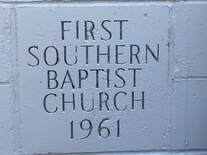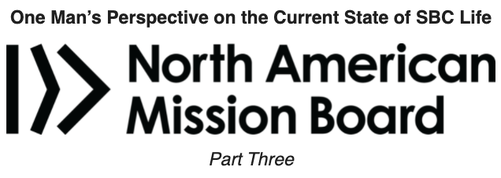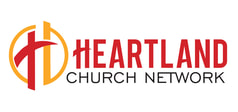 In the last two articles we have been on a high-speed run through SBC history with a specific look at our home missions work. As we turned the last curve, we found ourselves in 1961 celebrating the fact that we had finally fulfilled the vision cast in 1845 of being a national convention of churches. I pointed out that Southern Baptists did not become a national convention based upon our great mission strategy but because of the migration of former southerners. The churches they planted were predominantly for white folks who had a Southern Baptist background. I have worked with a significant number of ethnic churches, and the early SBC churches in the new work states could best be described as “ethnic churches.” They were ethnically southern and many emphasized the point by naming their church First Southern Baptist Church—which is on the cornerstone of our current office building. Because the vast majority of the churches in those new work states are main line churches (Catholic, Lutheran, Methodist, etc.) and members of the SBC churches went door-to-door like the Mormons and Jehovah Witnesses, we were viewed as cults. Our worship services were also VERY different—even different from other established evangelical churches in the area: public invitations at the end of each service, informal and highly relational worship style (a lot of hugging and chatting before and after services), and unusual terminology and speech patterns (ministers were called “Brother” and not “Pastor,” they used southern idioms, and had a southern drawl). If that wasn’t enough, ecclesiological issues surfaced because SBC churches had a strong emphasis on congregational polity, individual church autonomy, Sunday School for adults as well as children, and we used lay pastors. AND, we had worship services on Sunday morning, Sunday night, and Wednesday night and did revival services. For a more in depth description of the challenges we faced, follow the link describing SBC expansion in the Upper Midwest. However, by the 1980s some of the new work areas began to see the number of SBC churches and church membership numbers plateau, and in a few cases, even decline. The strategy of congregationalizing former southerners who had migrated north and west had run its course. Most Southern Baptists still live where there are a lot of SBC churches and a lot of other Baptists and evangelical churches. But in the new work areas ALL Baptists combined number far less than five percent of the total population and in most areas ALL evangelicals combined are around ten percent. So, the Great Commission was not going to be fulfilled by just starting churches of, by, and for people with a Baptist or evangelical background. We needed to figure out how to become missionaries and be willing to move out of our southern AND our Baptist comfort zone. It was time for new mission strategies to be developed! Some new work conventions recognized the need for change and began to make adjustments in their strategies. However, the reality is that because of our theology, polity, and multi-level cooperative partnerships making necessary changes is hard. Even when everyone agrees changes need to be made, there will be differences of opinion on what those changes should be, how and when they should be made, and who has the ultimate authority to make those decisions. For good measure we can also throw in the reality that in church life unless the changes are implemented with great skill and tact they will ALWAYS cause push back and pain! Conversations that should have begun decades before were suddenly forced upon churches, associations, and conventions in the new work areas when the Great Commission Resurgence Task Force (GCRTF) issued its initial report in February 2010. That report called into question the effectiveness of the historic partnership model: “The North American Mission Board and the state conventions have operated for several decades by what is called cooperative agreements and cooperative budgets. Through the years they have become complex and at times cumbersome, resulting in a lack of accountability.”12 In light of no or slow growth in many new work areas, the report also questioned who should be in charge of strategy development. “NAMB must become the leader in our strategy to reach North America.”13 The reality is that Southern Baptists had worked in a cooperative/partnership relationship since 1845 with the local churches through their associations and state conventions taking the lead role in strategy development. What Southern Baptists in the traditional southern states did not understand at the time was that our International Board and NAMB have always functioned very differently. A career missionary who serves through our International Mission Board is fully supported by the Board. Those missionaries function unilaterally in areas where there is little or no Christian work. In other words, they work like missionaries appointed by societies rather than conventions, because there are no local churches, associations, or conventions with whom they can partner. By contrast, only a very small percentage of those who were “NAMB appointed field missionaries” in 2010 were fully supported by the Board. If you were a church planter you had financial support from a sponsoring church, the local association, the state convention, co-sponsoring churches, and NAMB. If you were serving in the dual role of a Director of Missions/Church Starter Strategist, your position was funded by the association, state convention, and NAMB. There were even specific state convention positions that were jointly funded by NAMB and the state convention. The level of NAMB support for a given role depended upon the strength of the church, association, and the state convention. Historically SBC’s home mission work was partnership based. The Task Force did not recommend that historic relationship agreements be renegotiated, but that they should be eliminated. “Therefore, at the end of four years [final language was seven], the North American Mission Board will be completely free from these present agreements.”14 Their recommendation, when it was approved at the SBC Annual Meeting in June 2010, created a nationalized model for doing home missions (more of a societal model) and caused a 1800 shift in who had the authority to set strategy. With these realities in mind, what changes would you have envisioned taking place? What impact could they have on churches, associations, and state conventions in the new work areas? 12Page 20 of the Progress Report of the Great Commission Resurgence Task Force of the Southern Baptist Convention, February 22, 2010 13Ibid 14Pages 21-22 of the Progress Report of the Great Commission Resurgence Task Force of the Southern Baptist Convention, February 22, 2010 Yours in Christ, Mark R. Elliott, DoM
0 Comments
Leave a Reply. |
AuthorRetired in April 2022, Mark R. Elliott served as a Director of Missions (Associational Mission Strategist) in Western Iowa and Eastern Nebraska for almost three decades. He is a strong advocate for obedience and Biblically based disciple making. As such, he knows that making healthy disciples requires Christian leaders to be constantly pursuing spiritual maturity—be lifelong learners. Because of the time constraints of ministry, most pastors focus their reading list on resources that assist them in teaching and preaching the Word of God. As such, books focusing on church health, leadership development, and church growth tend to find their way to the bottom of the stack. With that reality in mind, Mark has written discussion summaries on several books that have helped him to personally grow in Christ and that tend to find themselves on the bottom of most pastor’s stack. Many pastors have found them helpful as they are able to more quickly process great insights from other pastors and authors. Archives
April 2022
Categories |
Looking for something? |
© COPYRIGHT 2024. ALL RIGHTS RESERVED.
|




 RSS Feed
RSS Feed
